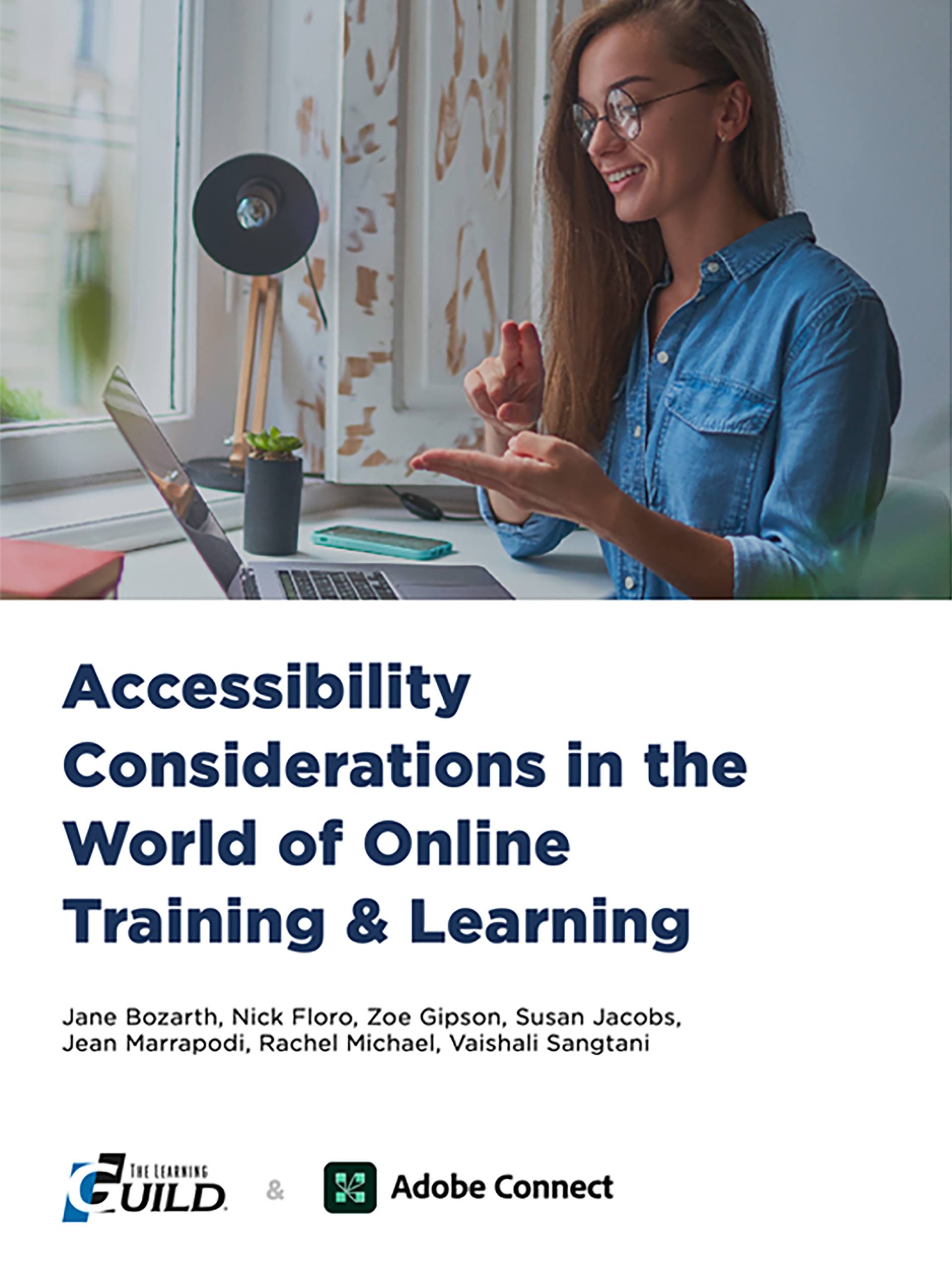How To Make VILT Experiences Accessible And Engaging
It is clear that people with disabilities face obstacles when it comes to traditional instructor-led training. Organizations today accommodate for their needs; making handouts available in larger print or providing adaptive hearing devices. While the virtual classroom removes the barrier of traveling to a physical location, it requires specialized accessibility considerations, much like traditional ILT programs.
One that becomes immediately apparent as a growing number of instructors pivot to virtual platforms is the need for closed captioning. This is true for both live and on-demand virtual training. But closed captioning is important not just for those with disabilities. It is a valuable aid for ESL (English as a Second Language) viewers, as well as people who process information slowly. In fact, more than 100 empirical research studies document that closed captioning (also called subtitles) improves comprehension and retention for ALL viewers.

Designing Accessible Experiences: How To Overcome Virtual Learning Environment Challenges
Before Training
Facilitators can be more prepared to provide accommodations and eliminate these virtual learning environment challenges if they know in advance what is required. A best practice is to proactively send out a short survey right after registration. Provide an overview of what is expected to happen in the class, and ask learners to identify any challenges that would impair their ability to access the event or content. Assure participants that the goal is to make sure everyone can fully participate in the training.
Many individuals with visual challenges rely on screen readers to help them decipher written material. When preparing VILT sessions, a best practice is to load supplemental documents and slides into the platform as early as possible so those who depend on adaptive devices have sufficient time to preview the supporting material prior to the designated start time. Similarly, trainers who intend to show video snippets during a virtual training class should make them available in advance to learners with special needs so they have the opportunity to consume them beforehand with accessibility features turned on.
During Training
If a video training includes film clips, those with limited vision abilities may need scaffolding or closed captioning to describe the scenes, as hearing the dialogue alone may not be sufficient for them. Although those with hearing limitations often have their own transcription tools that rely on machine learning to transform speech to text in real time, in some cases those with hearing impairments might also benefit from the inclusion of sign language interpreters in VILT.
It is common practice for virtual trainers to foster engagement by launching polls or asking attendees to use status indicators to signal agreement or disagreement with a particular point. In a traditional classroom, participants can simply raise their hands or use their voices to weigh in. However, response options are different in a virtual classroom. When designing for VILT, it is important to make sure that those with motor impairments can complete such tasks using standard inputs such as a mouse or touchpad, or keyboard commands.
After Training
When doing assessment, consider providing alternative formats to accommodate special needs. A multiple choice test can be read to a student using a screen reader, but allowing the
student to respond verbally bypasses visual limitations. Similarly, mastery can be demonstrated in a variety of ways. If there are mobility limitations, a 1-on-1 conversation can serve the same purpose as an essay.
After training, facilitators routinely distribute links to the session recordings. To assure that VILT training is truly accessible, be sure that transcripts of such recordings are made available to those who need them.
11 Quick Tips To Make Your Virtual Training More Accessible
- Don’t hesitate to ask students what they need. Often they will share helpful insights.
- For those who have challenges processing information, create an agenda in advance and provide graphic organizers to help structure information.
- Proactively release supplemental material prior to training so those with disabilities have ample time to access it.
- Add closed captioning to all assets.
- Reduce the amount of information on single slides.
- Slow down speech.
- Check contrast to make sure all text is clear and legible, and distinct from backgrounds. Be careful with gradients.
- Incorporate inclusive images and language.
- Edit, edit, edit, and edit again—each time with a different lens. Consider: Does this data presentation work for someone with a small screen? Does this picture have a text description that accurately captures what I am trying to portray? Is this page too busy? Am I using example language that is inclusive?’
- User test, user test, and user test again. Examine both hardware and software, and solicit feedback from different users.
- If need be, hire a third party consultant or QA specialist with accessibility expertise to run an audit to make sure you did not miss anything.
Explore More Insights To Overcome Virtual Learning Environment Challenges
A robust platform can help a facilitator deliver truly accessible virtual training. When choosing a virtual training platform, learning leaders should focus on solutions that offer a broad array of accessible features such as closed captioning, subtitles, multiple audio tracks, keyboard commands, color & contrast controls, enhanced navigational features, and compatibility with screen readers. Regardless of the platform they select, L&D teams must continually test and evaluate to assure accessibility and compliance.
Download the eBook Accessibility Considerations In The World Of Online Training And Learning to discover how to create inclusive L&D experiences for every member of your team.


